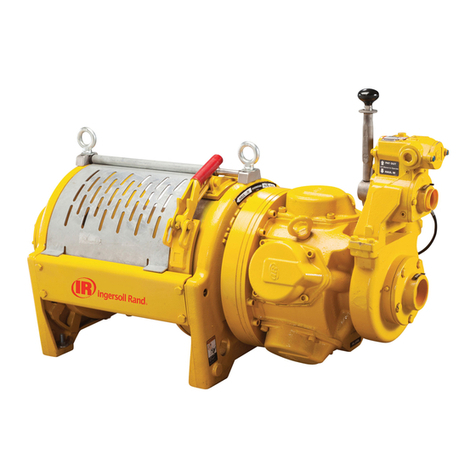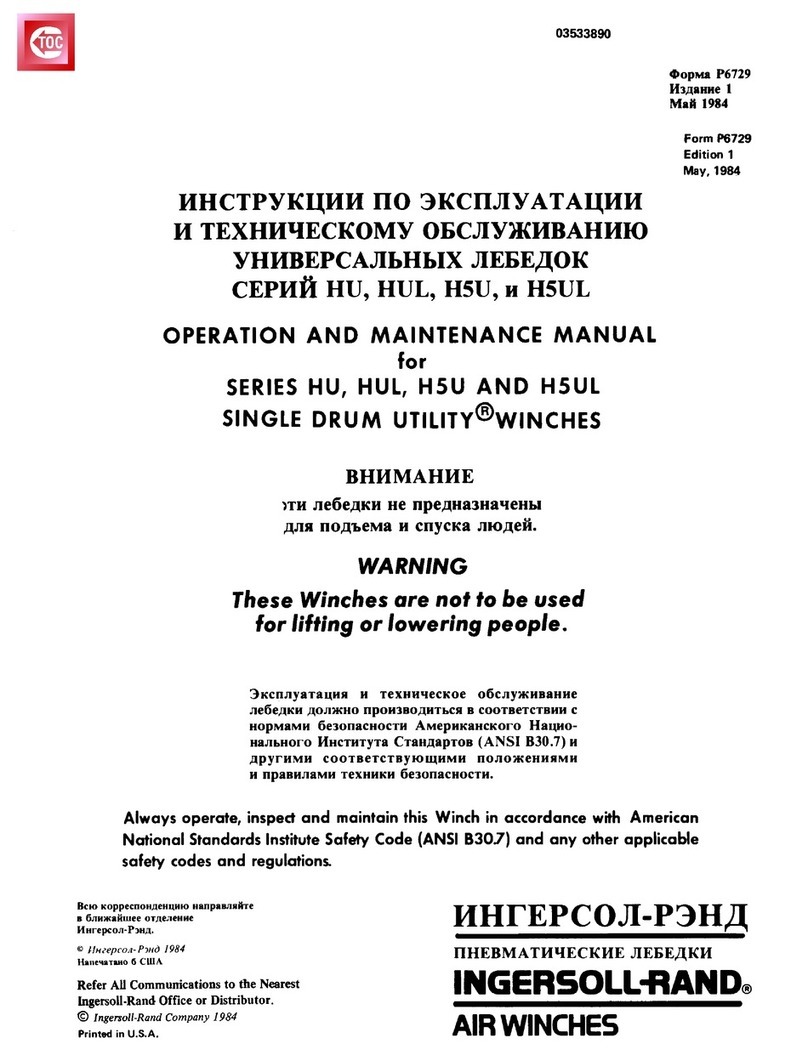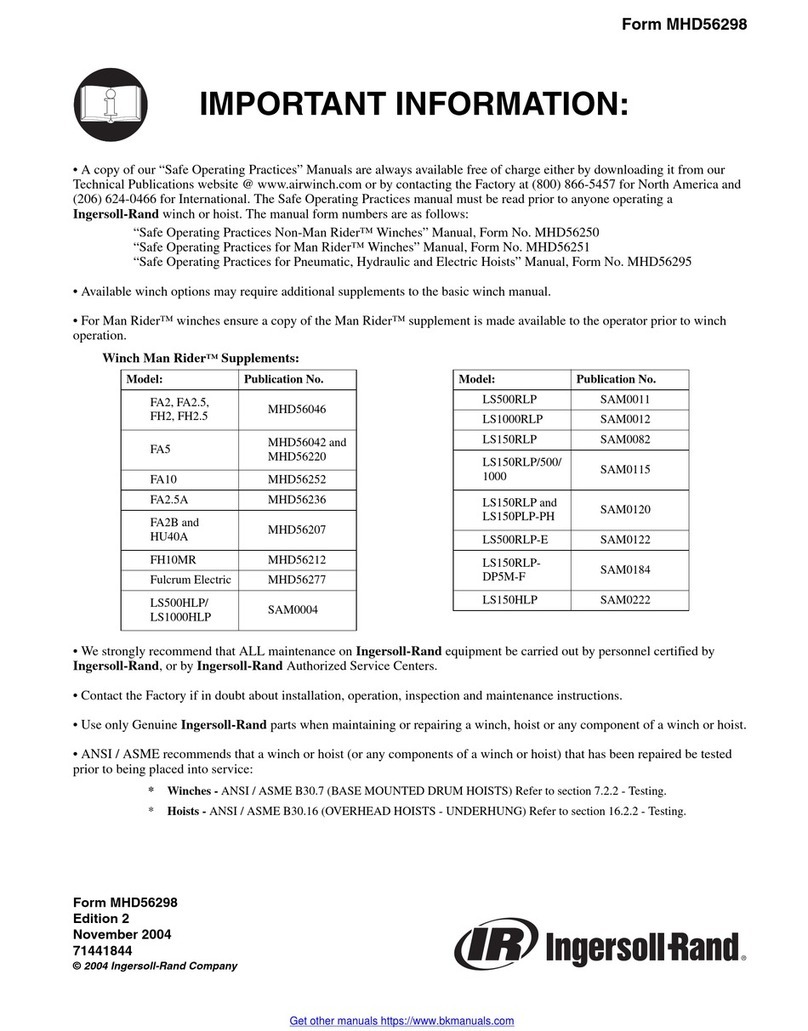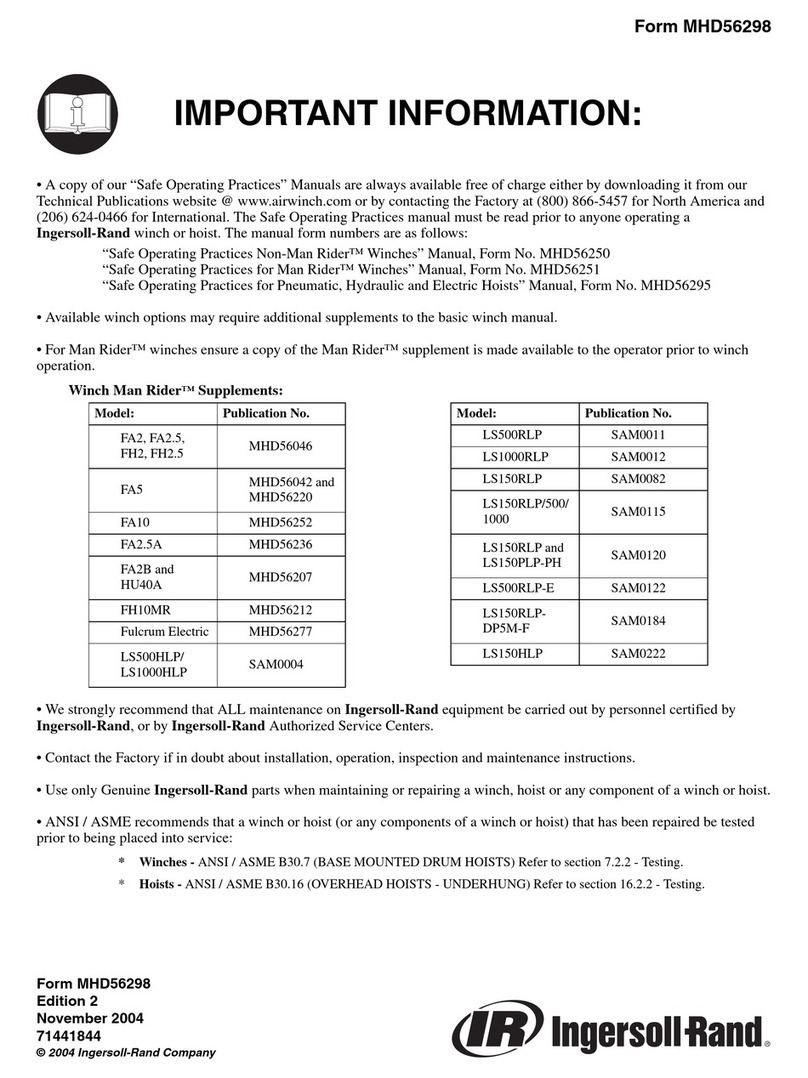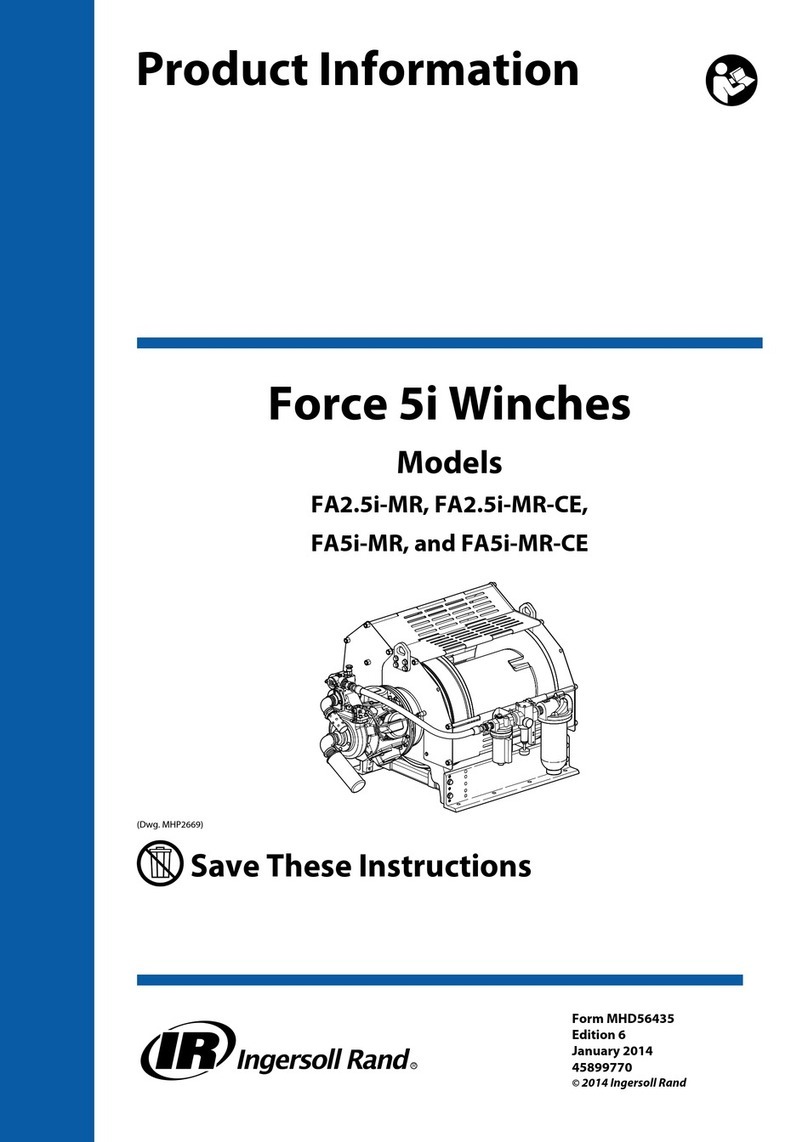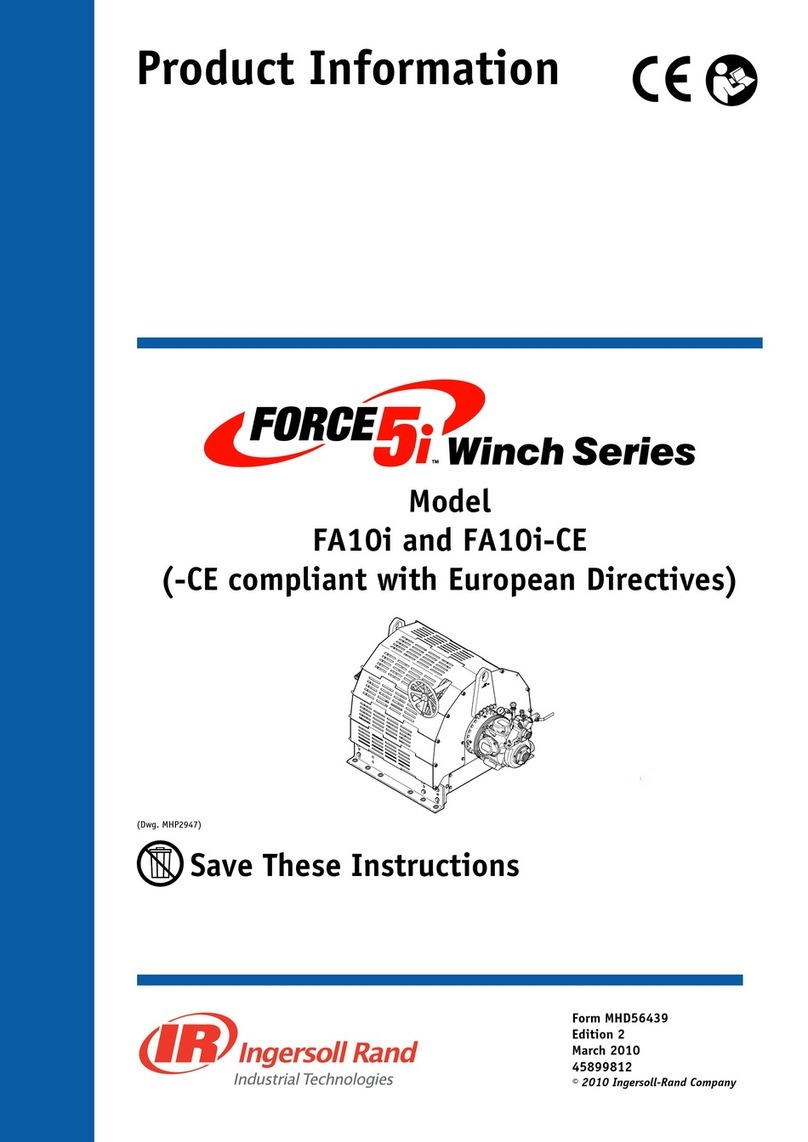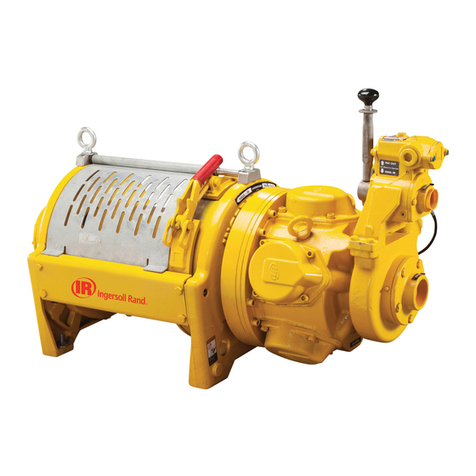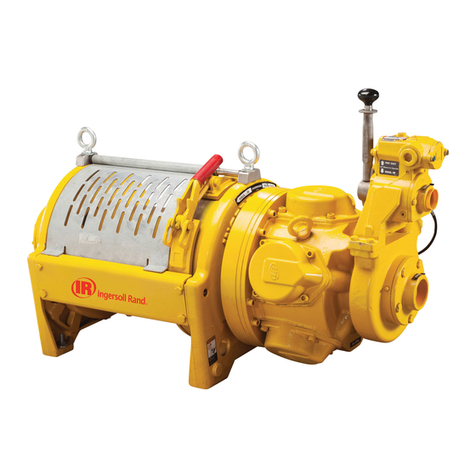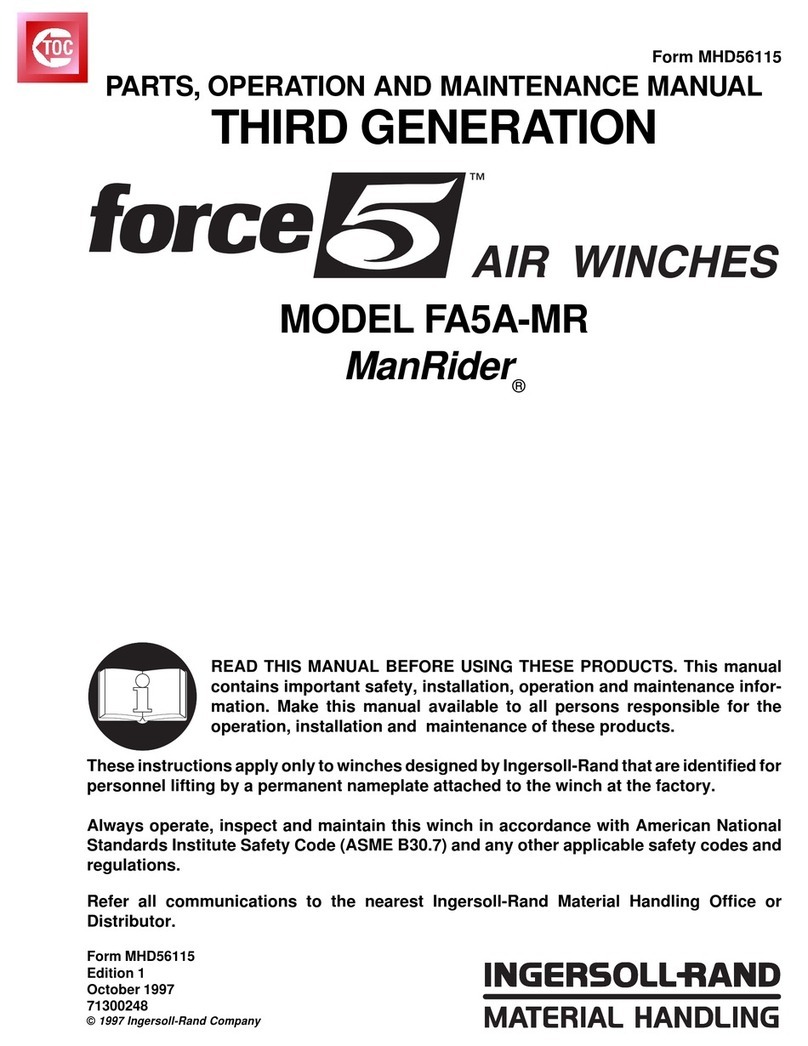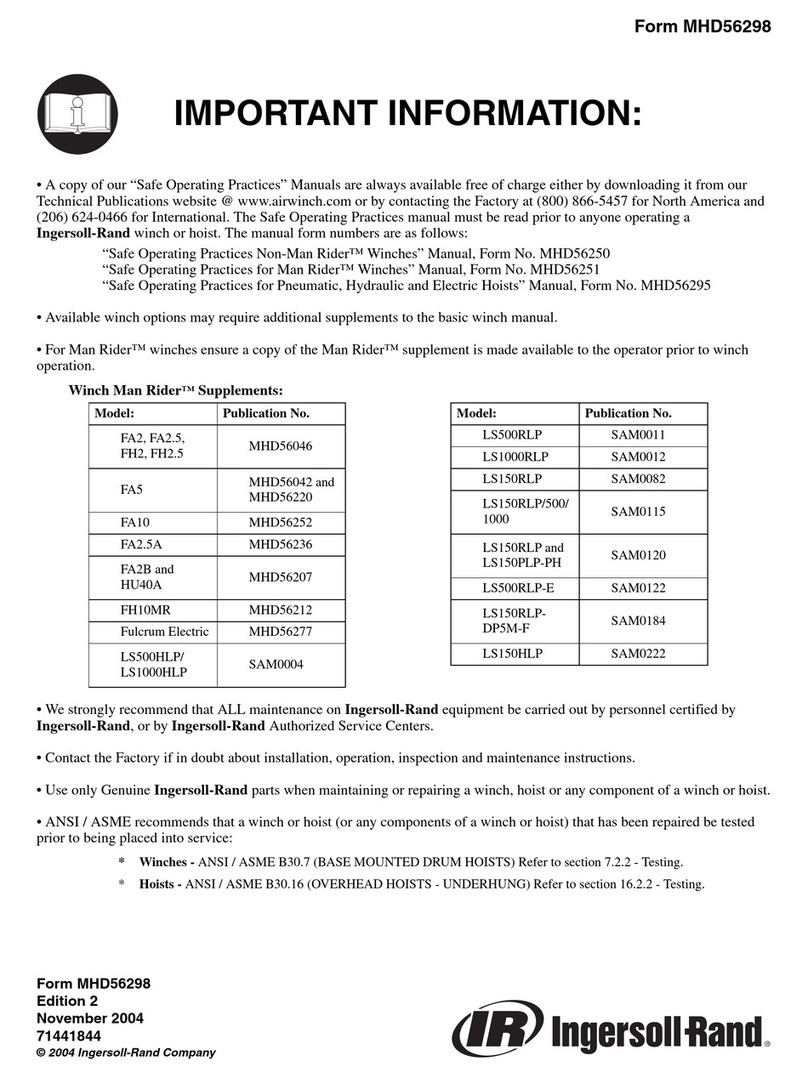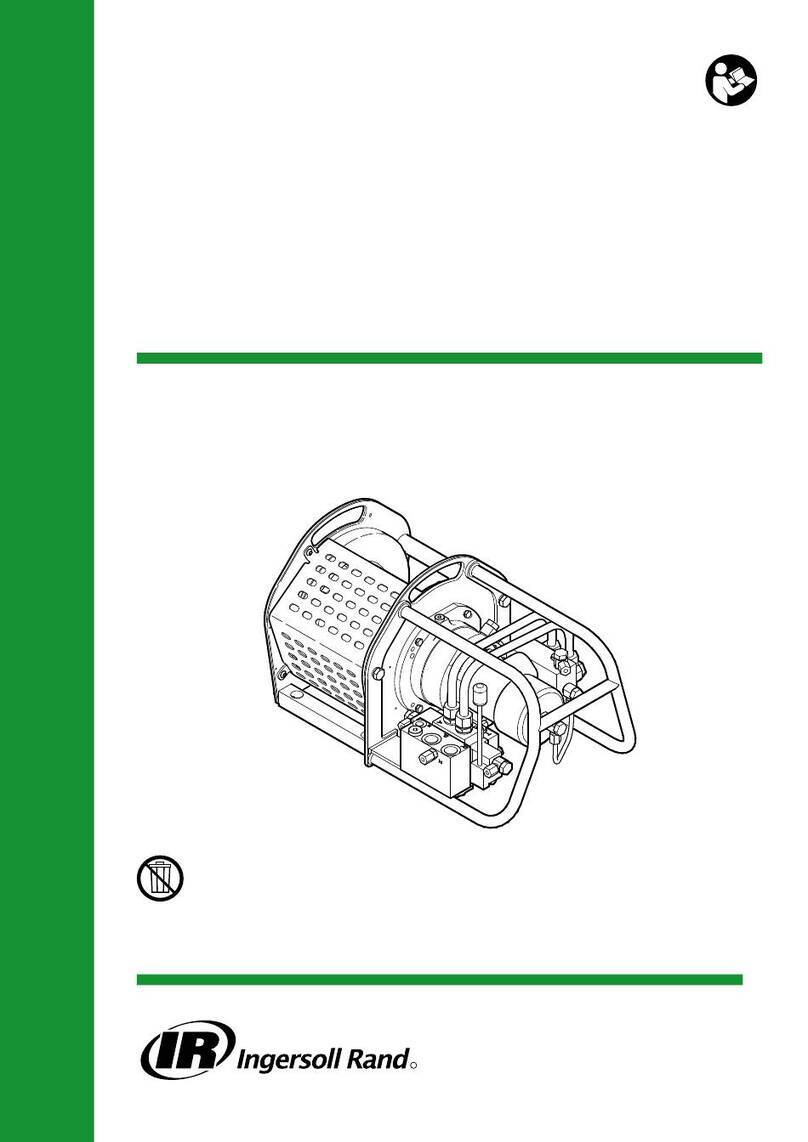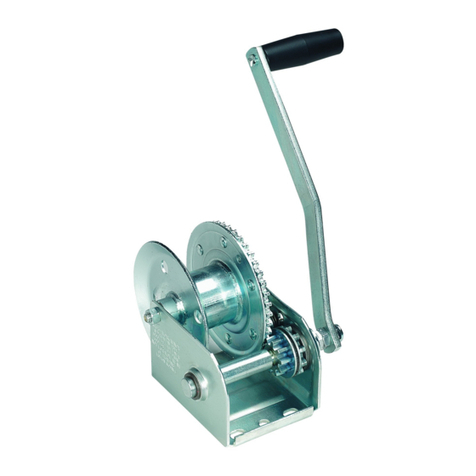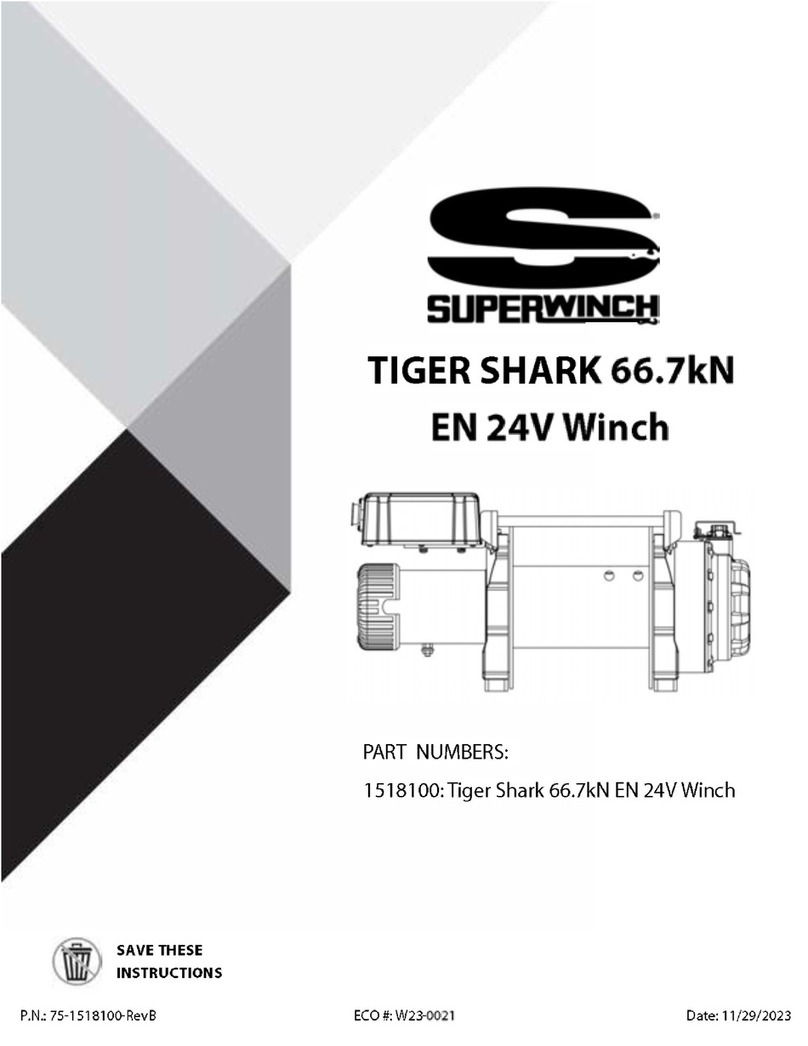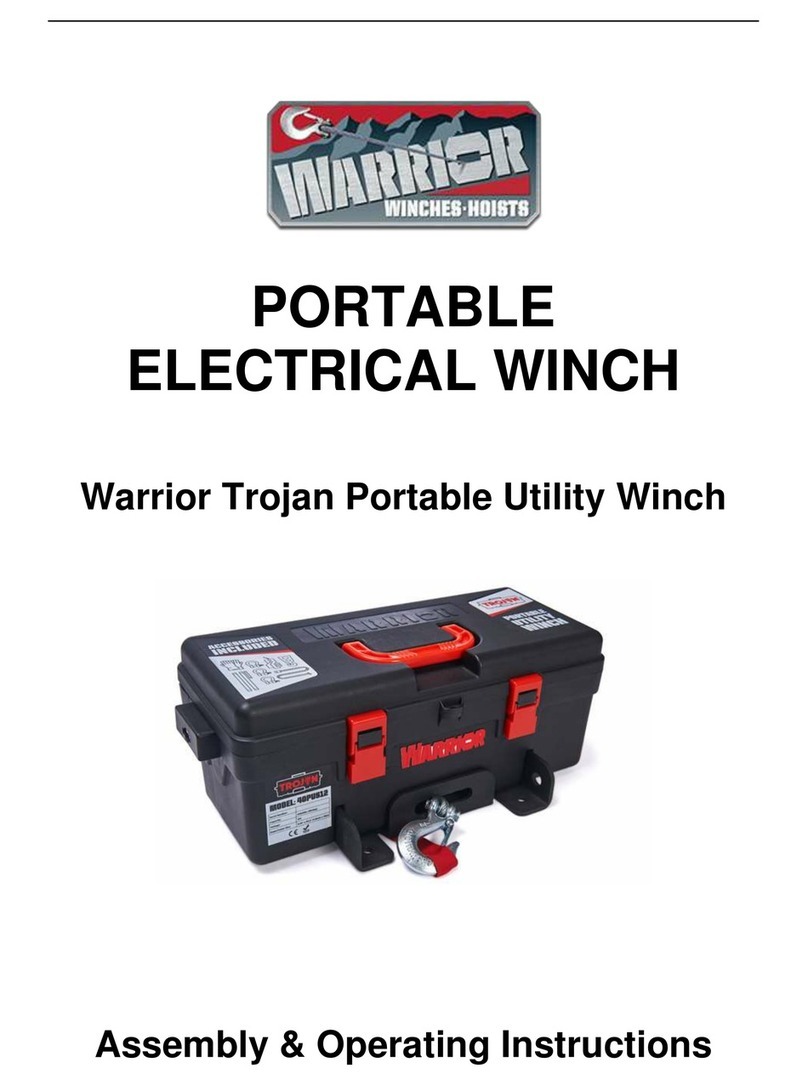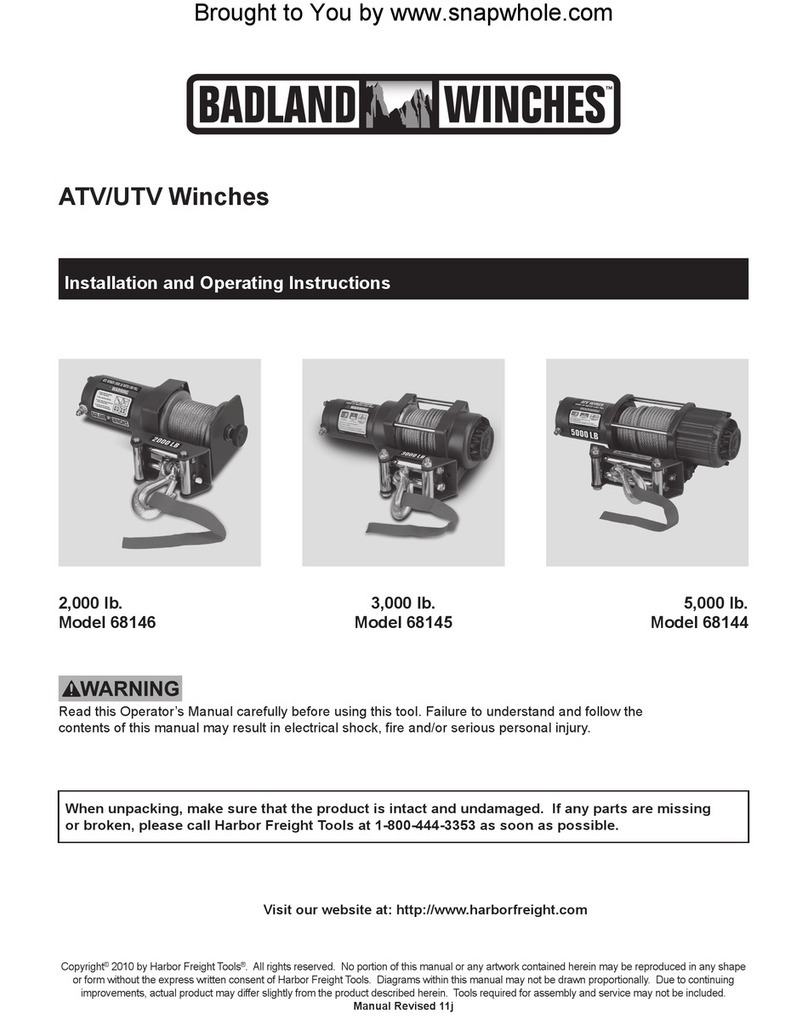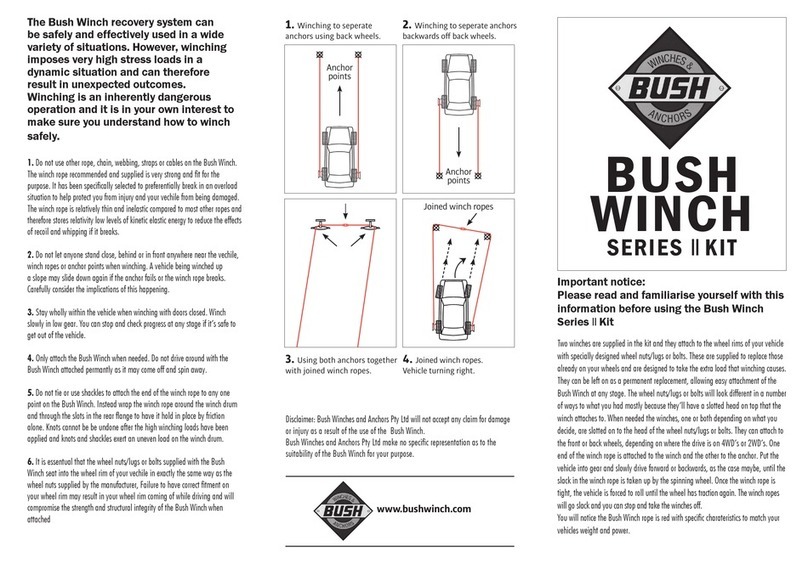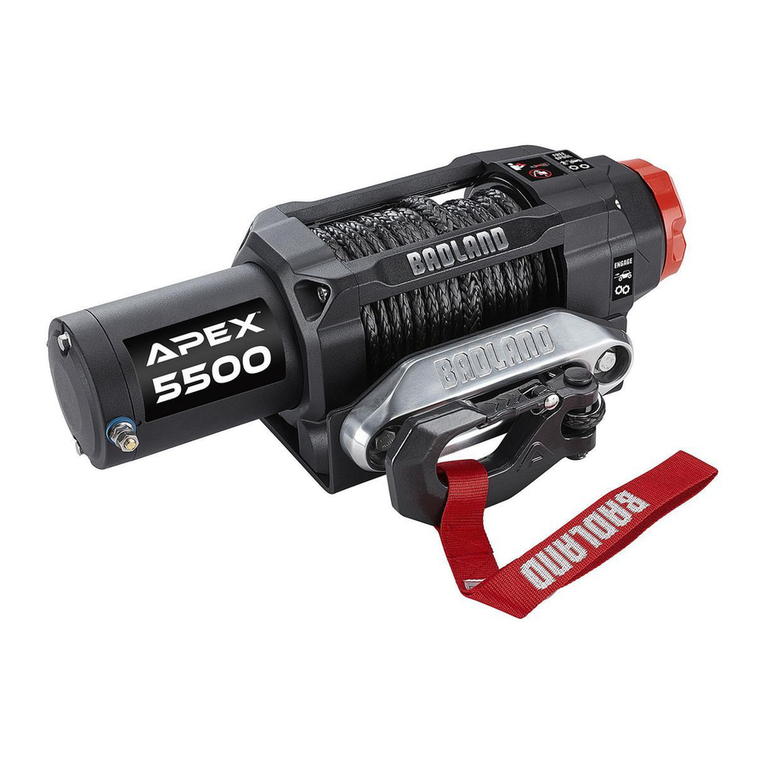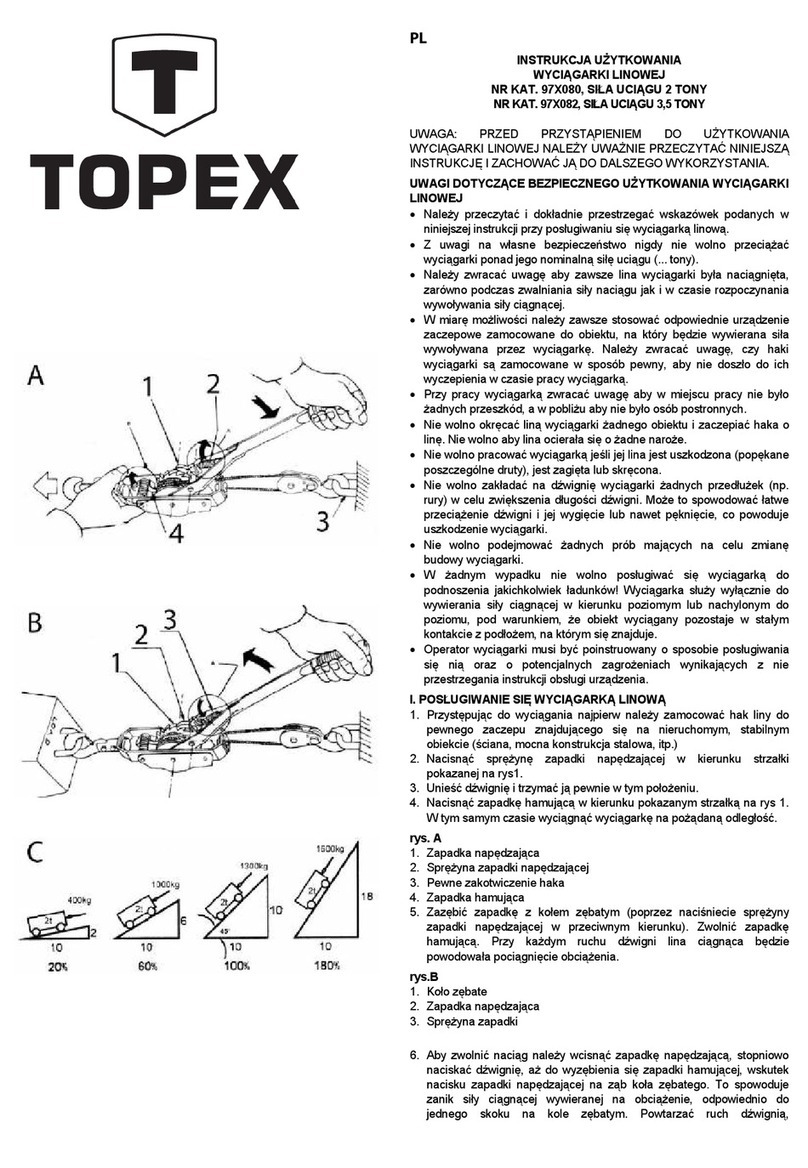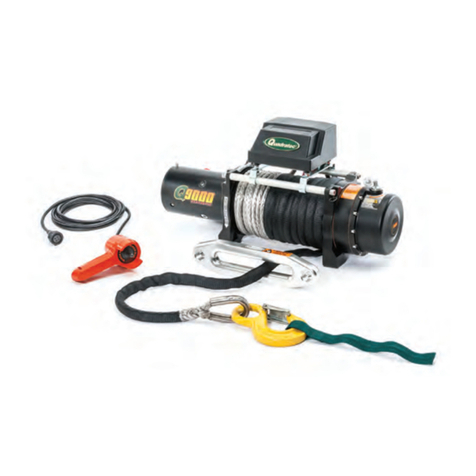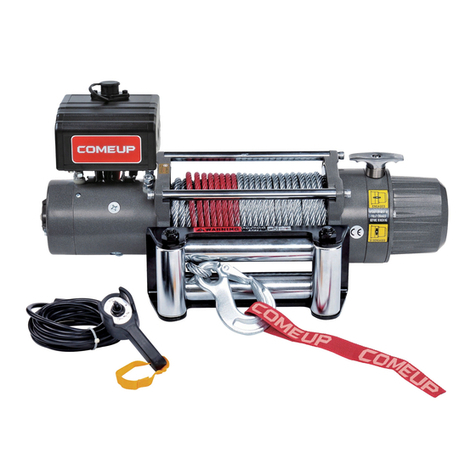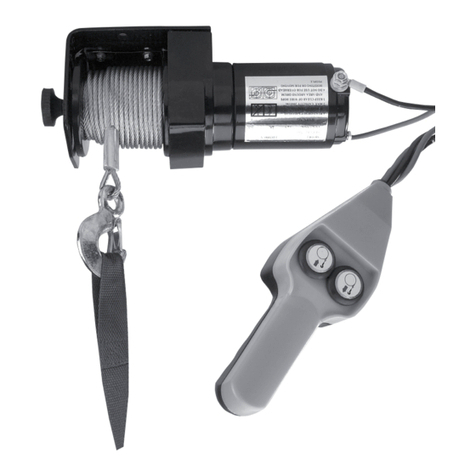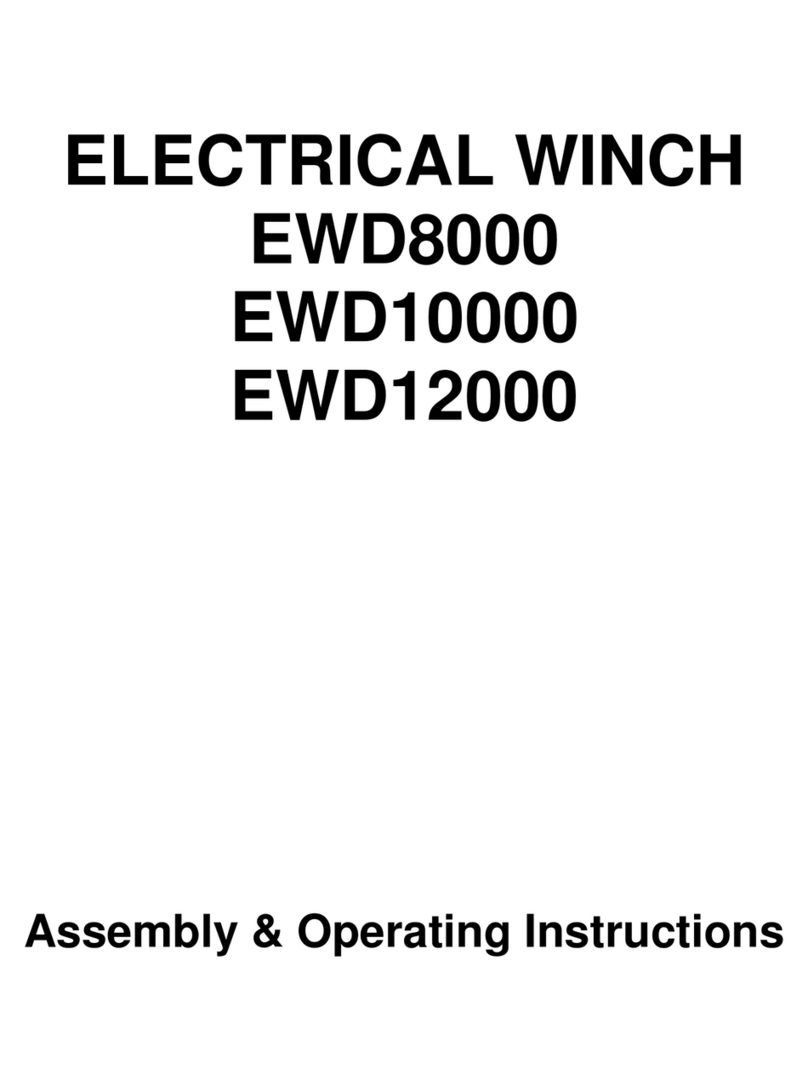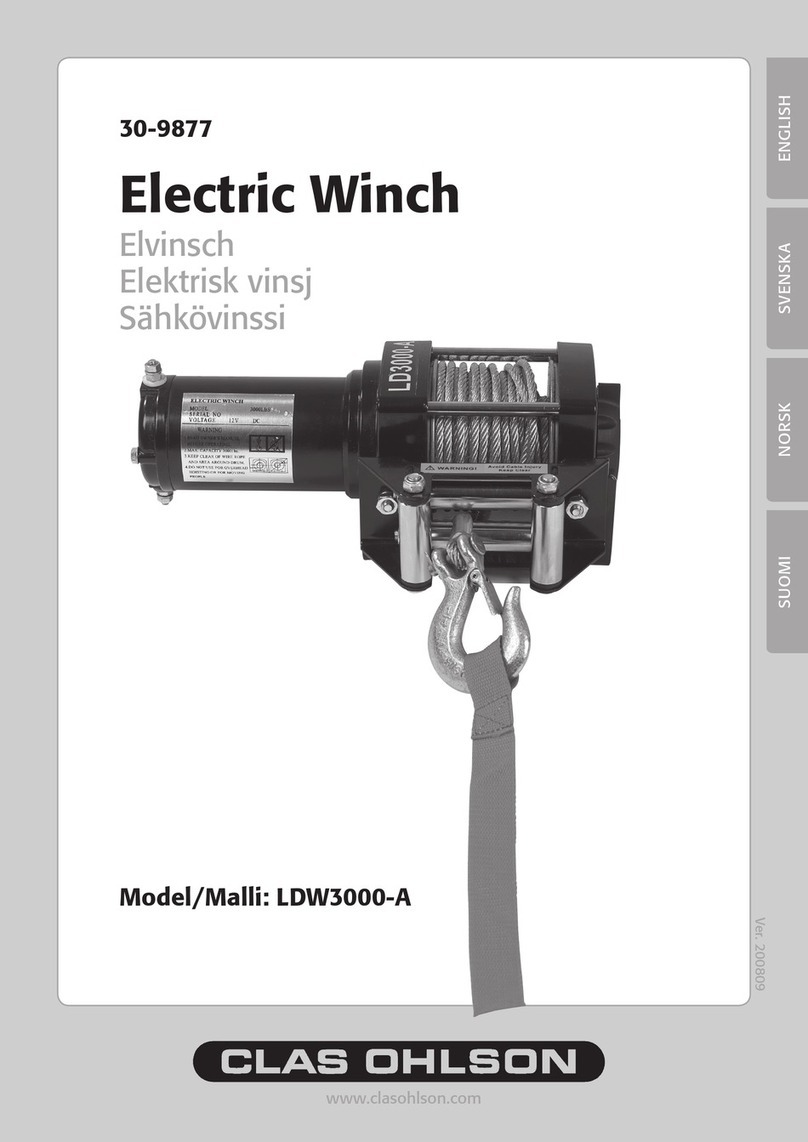
This manual provides important information for all
personnel involved with the safe installation, operation
and proper maintenance of this product. Even if you feel
you are familiar with this or similar equipment, you must
read understand this manual before operating the
product.
Training must be done by a qualified person to any
personnel involved with an air powered man-riding
winch
Danger, Warning, Caution and Notice
Throughout this manual there are steps and procedures
which, if not followed, may result in a hazard. The
following signal words are used to identify the level of
potential hazard.
Danger is used to indicate the
presence of a hazard which will cause
Severe personal injury, death, or
substantial property damage if the
warning is ignored.
Warning is used to indicate the
presence of a hazard which can
cause severe personal injury, death, or
substantial property damage if the
warning is ignored.
can
Caution is used to indicate the
presence of a hazard which willor
cause minor pcrsonnal injury or
property damage if the warning is
ignored.
Notice is used to notify people of
installation, operation, or maintenance
information which
hazard-related. is important but not
“MAN-LIFTING with this winch is STRICTLY
LIMITED to off-shore marine applications specifically
approved by maritime regulatory bodies. Regulatory
bodies, not manufacturer, have determined suitable use.
DO NOT USE FOR MAN-LIFTING applications not
specifically approved by regulatory bodies.
The use of a winch to lower, lift or suspend personnel
should be permitted only when other means of reaching the
worksite, such as ladders, stairways, aerial (bucket-type)
lifts or scaffolds, arc not feasible because of site conditions.
Presently Man-Riding winches are available built to
specifications published by :
Det Norske Veritas : Winches type approved and/or
certified by Det norskeVeritas (DNV) to meet Norwegian
Max-itime Directorate (NMD) or Norwegian Petroleum
Directorate (NPD) requirements.
In furnishing customers Man-Riding winches, Ingersoll-
Rand does not warrant the suitability of these winches for
any particular use. It is the owner and user’sresponsibility
to determine the suitability of a Man-Riding winch for a
particular application. Further, it is the owner and user’s
responsibility to check and satisfy all local, state, federal
and country requirements pertaining to the lifting and
lowering of persons.
Many agencies require additional redundant safety
devices on winches that IR/SAMIIA does not furnish.
Additional devices are often required to bring the
system up to elevator code standards.
Winches manufactured by IR/SAMIIA as an approved
Man-Riding to DEn and/or NMD/NPD requirements are
furnished with limitations ; approval for use in Man-Riding
applications automatically terminates for any of the
following reasons :
1- Winch does not meet other applicable codes or
standards.
2 - Winch is not part of an approved system.
3 - Winch is not properly maintained in a new condition
with all parts intact and properly adjusted.
4 - Winch is used in applications not approved by-codes and
regulations, or applications inconsistent with
manufacturer’s operating and maintenance manual.
5 - Changes in DEn or NMD/NPD standards or regulations
after Ingersoll-Rand’s initial shipment of the product.
6 - More than one winch is used to attach to a common
load.
Be sure to check all regulations, local and country, that
may apply to the use of a winch or winch system for
lifting and lowering people before using a Man-Riding
winch.
7 - The personel platform shall be designed by a properly
qualified engineer competent in this area.
Using other than genuine IR/SAMIIA Material Handling
parts will result in the void ofwarranty.
3
